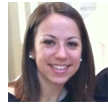Creating Scientific Discovery in the Classroom
From Rachel Gesserman
 At the Broad Institute of MIT and Harvard, scientists are dedicated to the bold mission of using the full power of genomics to transform the understanding and treatment of disease. The office of education and outreach at the Broad Institute works with middle school and high school students to convey not only the exciting scientific breakthroughs that Broad researchers and their collaborators make each day, but also an understanding of the promise of biomedical research and what it means to be a scientist at the Broad. Recently we have begun developing curricula that challenge students to conduct their own scientific investigations using the same data and techniques that Broad scientists use. By putting real data into the hands of students, they are given an authentic opportunity to think like a scientist by coming up with their own conclusions and interpretations of the data. At the Broad Institute of MIT and Harvard, scientists are dedicated to the bold mission of using the full power of genomics to transform the understanding and treatment of disease. The office of education and outreach at the Broad Institute works with middle school and high school students to convey not only the exciting scientific breakthroughs that Broad researchers and their collaborators make each day, but also an understanding of the promise of biomedical research and what it means to be a scientist at the Broad. Recently we have begun developing curricula that challenge students to conduct their own scientific investigations using the same data and techniques that Broad scientists use. By putting real data into the hands of students, they are given an authentic opportunity to think like a scientist by coming up with their own conclusions and interpretations of the data.
Our approach relies on establishing partnerships between Broad researchers and local high school teachers to design, implement, evaluate, and adapt curriculum.
AN EXAMPLE USING EBOLA
During the 2014 Ebola outbreak in West Africa, researchers at the Broad Institute obtained samples from patients diagnosed with Ebola in Sierra Leone in order to sequence and analyze Ebola virus genomes. This data provided insight into how the virus was mutating over time, which was critical to understanding how Ebola was being transmitted between people and where it could be moving geographically. The genome sequences were published in a public database so that researchers around the world could do similar analyses to accelerate response efforts. Naturally we thought, why not have students around the world do the same thing?
Working with teachers at a local high school, Broad scientists developed and taught a hands-on lesson focusing on how to analyze and interpret DNA sequence data. Using genome-viewing software, students were challenged to locate mutations in Ebola sequences and group the sequences based on similarities. They demonstrated their understanding by creating a visual representation of the Ebola virus transmission chain in Sierra Leone. This process was nearly identical to the procedure carried out by Broad scientists during the outbreak, and students were able to compare their conclusions to those of the scientists.
PARTNERING TEACHERS WITH SCIENTISTS
The teacher-scientist partnership was critical in designing and adapting this lesson. Scientists contributed their expertise about data collection, analysis, and visualization, while exposing students to new technologies and an interdisciplinary approach to research. Teachers provided invaluable insight about addressing student misconceptions, identifying classroom friendly technology, creating support materials for educators, and having reasonable expectations about what students can accomplish in a given timeframe. Partnerships like this allow both parties to contribute their expertise in order to provide the best authentic science experience for students, allowing them to get a glimpse of what a future in scientific research could be like.
Rachel Gesserman is Education and Outreach Coordinator at the Broad Institute of MIT and Harvard in Cambridge, MA.
Back to newsletter |